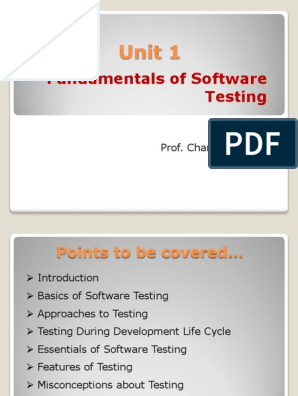0% found this document useful (0 votes)
11 views19 pagesUnit-I Introduction Part-I
The document outlines the course structure for 'Software Testing and Quality Assurance' offered by Dattakala Group of Institutions, detailing the teaching and examination schemes. It covers fundamental concepts in software testing, the importance of quality in software development, and historical perspectives on quality improvement. Additionally, it discusses various definitions and views of quality from different stakeholders, emphasizing the financial aspects related to quality management.
Uploaded by
ssdarade.foeCopyright
© © All Rights Reserved
We take content rights seriously. If you suspect this is your content, claim it here.
Available Formats
Download as PDF, TXT or read online on Scribd
0% found this document useful (0 votes)
11 views19 pagesUnit-I Introduction Part-I
The document outlines the course structure for 'Software Testing and Quality Assurance' offered by Dattakala Group of Institutions, detailing the teaching and examination schemes. It covers fundamental concepts in software testing, the importance of quality in software development, and historical perspectives on quality improvement. Additionally, it discusses various definitions and views of quality from different stakeholders, emphasizing the financial aspects related to quality management.
Uploaded by
ssdarade.foeCopyright
© © All Rights Reserved
We take content rights seriously. If you suspect this is your content, claim it here.
Available Formats
Download as PDF, TXT or read online on Scribd
/ 19






















































































